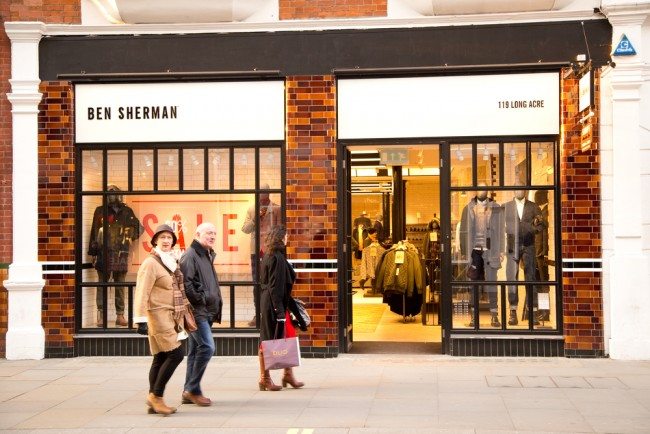It is the latest change in ownership for Ben Sherman, a company whose shirts were a staple of the golden age of UK youth cults, worn by mods in the 60s and later adopted by that movement’s various offshoots including skinheads, suedeheads and rude boys.But the business – founded in Brighton in 1963 by Arthur Benjamin Sugarman and sold by him in the 1970s – has lost its way in recent years.Sugarman moved from Britain to the US at the end of the second world war, raised a family and worked at his father-in-law’s clothing manufacturing business.
Having changed his name to the more all-American sounding Ben Sherman, he returned with his family to England in the early 60s and rented a factory in Brighton, Sussex.
He spotted that high-spending members of the growing mod movement were buying imported preppy button-down shirts made by firms in the US such as Brooks Brothers and decided to produce his own version.
Sherman imported fabrics from the US and packaged each of his shirts, made from Oxford cotton in unusual colours such as pink and mint green, in a box. The shirts’ distinctive features included a button at the back of the collar.
Daphne Sherman, Ben Sherman’s widow, said: “I’m not sure about the quality of the cloth [now] because, going way back, the main thing Ben insisted on was getting the cloth right.
“The first shirts’ success was based on the Oxford cloth, which you could only get from America. The quality was very, very important.”
Sherman opened a store on Carnaby Street, the centre of swinging London, and was barely able to meet demand for his shirts as Roger Daltrey of the Who and other young dandies sought more shirts.
In 1970 Sherman ordered 1.5m square yards of cloth from his US fabric mill. George Best wore the shirts and stocked them at his Manchester men’s clothing boutique.
Sherman sold the business in the mid-70s and retired to Australia. Ben Sherman shirts remained popular in the late 70s and early 80s as the Jam, the Specials and Madness helped them appeal to the mod revival and rude boy movements.
When sportswear and global designers came to dominate fashions in the 1980s, Ben Sherman’s appeal faded. But the brand revived in the 1990s when it was taken up by Oasis, Blur and other mod-influenced Britpop bands.
Michael DeVirgilio, president of Marquee, which specialises in launching fashion brands into new markets, said he planned to overhaul Ben Sherman’s products and sell them in Japan, South Korea and South America.
He said: “Part of what drew us to the brand was its history and association with different culture movements over the years. These are incredible points of history in the music scene in the UK.
“We can revive that energy by reviving the relationship between the brand and the movements of today.”
The deal brings Marquee a second clothing brand after it bought the Italian shoe and leather goods maker Bruno Magli in February.
Oxford Industries bought Ben Sherman in 2004 for £80m from the private equity firm 3i but, after relying heavily on discounted sales online and through discount outlets, it put the business up for sale after it lost $10.8m (£7m) last year.
Terry Rawlings, who co-wrote My Favourite Shirt: a History of Ben Sherman Style, said: “Ben Sherman was based on mod style but then they started doing skaters’ stuff and turning their back on what was their meal ticket. They would put a target on something and think that made it mod.”
In a rare nod to the brand’s past, Paul Weller, the Jam’s former singer, designed a range of 60s-influenced shirts in 2007.
Weller said at the time: “I had to really save for my first Ben Sherman … the first one I ever got was a lemon yellow one. I must have been 12, 13, and it was a bit too big for me. But being a kid I didn’t realise you could take it back to the shop. I wore it till it fitted me.”


